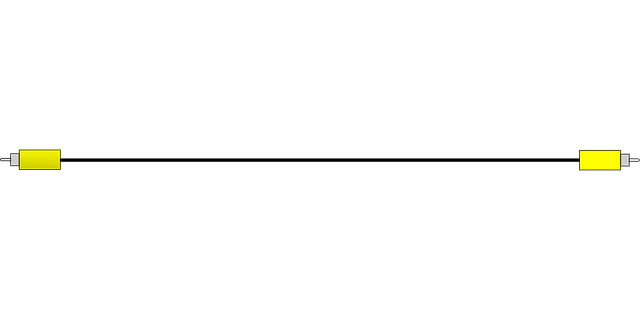High-density data centers require specialized office data cabling solutions due to intense equipment packing, emphasizing efficient cable management. Strategic planning supports high data transfer rates, minimizes signal loss, and facilitates future expansion. Best practices include compact cables, standardized labeling, and structured routing to enhance accessibility, reduce damage, and streamline infrastructure for optimal network performance. Future-proofing with fiber optic and adaptable cable systems ensures competitiveness in today's digital era.
In today’s data-driven world, high-density data centers are becoming the norm, demanding robust and efficient office data cabling solutions. This article delves into the intricacies of designing cabling layouts for these densely packed environments. We explore key considerations, best practices, and future trends to ensure reliable infrastructure. From understanding the unique demands of high-density data centers to implementing cutting-edge cabling technologies, this guide provides insights for professionals aiming to optimize their office data networking.
Understanding High-Density Data Centers and Their Cabling Demands
High-density data centers are characterized by their compact design and maximum capacity, housing an extraordinary number of servers, storage devices, and networking equipment within a limited space. This dense arrangement presents unique challenges when it comes to office data cabling. The relentless demand for more computing power and storage has led to a significant increase in equipment density, making traditional cabling methods inadequate.
In these environments, every millimeter counts, and efficient cable management is crucial. High-density data centers require specialized office data cabling solutions that can support the immense data transfer rates and provide the necessary flexibility to accommodate future expansion. The cabling infrastructure must be meticulously planned to ensure optimal performance, minimize signal loss, and allow for easy maintenance and upgrades.
Key Considerations for Office Data Cabling in High-Density Environments
In high-density office environments, efficient and organized office data cabling is paramount to ensure optimal network performance and maintain a clutter-free workspace. Key considerations include cable management strategies that maximize space utilization while minimizing cable bends and breaks. Using compact, low-profile cables and connectors can significantly reduce cable congestion, allowing for easier maintenance and future upgrades.
Additionally, implementing a well-planned cabling infrastructure helps to mitigate signal interference, ensuring high-speed data transmission and reliable network connectivity. It is crucial to adhere to industry standards and best practices for cable placement, labeling, and documentation. This not only facilitates faster troubleshooting but also aids in scaling the network as the office grows or changes.
Best Practices for Efficient and Reliable Data Center Cabling Layouts
In high-density data centers, efficient and reliable office data cabling layouts are paramount for optimal performance. Best practices involve strategic cable routing to minimize clutter and crossing, ensuring cables are neatly organized and secured. This reduces the risk of damage and facilitates easier maintenance. Employing a standardized, logical labeling system for each cable type and route is crucial, allowing IT staff to quickly identify and troubleshoot issues.
Additionally, utilizing appropriate cable management tools such as tie-raps, cable trays, and panels helps maintain order within the structured cabling system. These tools not only keep cables organized but also protect them from wear and tear caused by constant movement and potential foot traffic. By adhering to these practices, data centers can achieve a more streamlined infrastructure, enhancing overall efficiency and reliability.
Future-Proofing Your Infrastructure: Trends in High-Density Cabling Solutions
As technology continues to advance at a rapid pace, future-proofing your infrastructure is essential. High-density environments in offices demand robust and flexible data center cabling solutions that can keep up with emerging trends and technologies. One prominent trend is the shift towards fiber optic cabling, which offers unparalleled speed and bandwidth, crucial for handling large volumes of data efficiently. This evolution in office data cabling ensures that organizations remain competitive and prepared for future digital transformations.
Additionally, modular and adaptable cable management systems are gaining popularity. These innovative solutions allow for easier reconfiguration and expansion, accommodating the dynamic nature of high-density setups. By adopting these trends, businesses can ensure their data centers stay up-to-date with the latest advancements in technology, providing a solid foundation for long-term growth and success.
In high-density data centers, efficient office data cabling is paramount for achieving optimal performance and reliability. By understanding the unique demands of these environments, implementing best practices for cabling layouts, and staying ahead of industry trends, data center operators can future-proof their infrastructure to support dense deployments. This ensures not just sustained operability but also enhances scalability, enabling businesses to stay competitive in today’s digital landscape.
